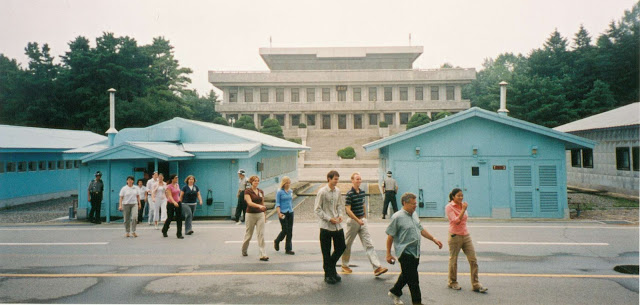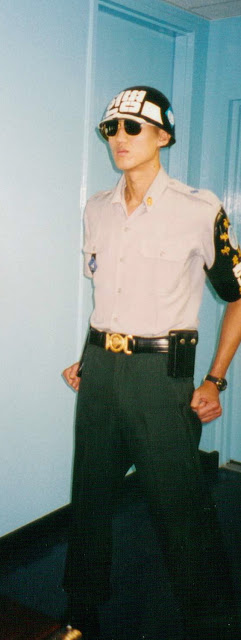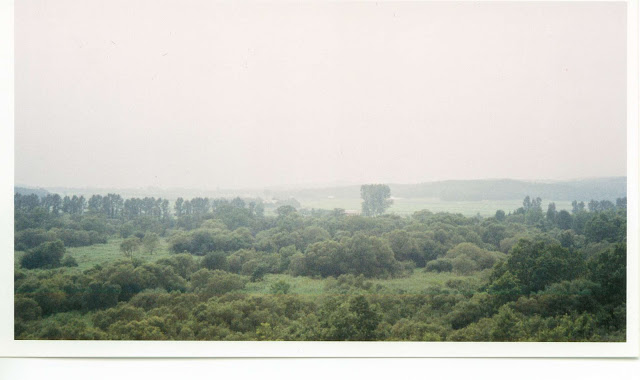

| Visitors Now: | |
| Total Visits: | |
| Total Stories: |

| Story Views | |
| Now: | |
| Last Hour: | |
| Last 24 Hours: | |
| Total: | |
A Visit to the Korean DMZ
The fact that I was visiting one of the world’s deadliest and most heavily armed borders (if not the most) didn’t really dawn on me. What I remember most about my visit to the Korean Demilitarized Zone (DMZ) were the silly things. I had Burger King for breakfast (I didn’t opt for this, my study abroad program provided everyone with Burger King before we departed). I had to borrow closed toe shoes from a Korean classmate since dress requirements to the DMZ are strictly enforced (sneakers were not allowed). That facet of information had not been conveyed to me before I left the United States and so seeing as how it was summertime, my only footwear besides sneakers was sandals. I never quite understood why sandals were forbidden unless they thought in case of an attack, closed toe shoes would be more advantageous (I jest on this). More ominous, though, than American fast food for breakfast and being forced to borrow shoes was having to sign a document which basically stated that a visit to the DMZ would entail entry into “hostile” territory, and so there was the possibility of injury or death as a result of enemy action. Reading the document and subsequently signing it was when I didn’t want to think of the visit as having anything to do with tourism.
While a visit to a Nazi concentration camp, one where the barracks still stand and the remains of the crematoria are still visible, will evoke the most haunting sense of history, I didn’t feel this way at Panmunjom. This is the name of the village where the demarcation line of the DMZ is located. Today it is abandoned, its residents forced to leave after the end of fighting in the Korean War. We were told that the village fell into disrepair and eventually disappeared from the landscape completely. Simply put, I felt odd being there. Although I didn’t feel right in taking pictures, I did. I didn’t smile in the two photographs of myself at the DMZ. While classmates of mine laughed and acted carefree as if they were anywhere, I couldn’t. I was at no ordinary place but rather somewhere very few people go but most everyone knows. I knew I shouldn’t regard it as a tourist attraction, seeing as how the DMZ is all that separates two countries from war, but instinctively I did.
After being “briefed” on the DMZ and its role today, we were taken outside to the Joint Security Area (there is a gripping Korean film of the same name that I would highly recommend viewing), which is the only section of the DMZ where South and North Korean forces stand face to face. Until March of 1991, it was also the site of military negotiations between North Korea and the United Nations Command. When we went in the MAC Conference Room, we saw both a soldier of the Republic of Korea (South Korea) and a soldier of the Democratic People’s Republic of Korea (North Korea). What I found ironic is that the South Korean soldier was a lot more intimidating and scary. He stood so still, his image hidden behind his black bomber style sunglasses, one would almost think he belonged in Madame Tussaud’s. The soldiers in the Joint Security Area stand in front of the door of the other country.
As we were coming out of the MAC center, we saw North Korean tourists on the opposite side of the Joint Security Area, on what was North Korean soil. I was amazed when I spotted some of the tourists taking pictures of our group until I realized we were a subject worth capturing, considering the isolated and deprived world the North Korean people live in. I wondered to myself if any of them realized the enormity of what the DMZ represented, or if it just represented to them the valiant and patriotic struggle the North Korean people waged and their mind, won.
Our last stop was the observatory area that overlooked the actual DMZ. There was nothing but green for as far as the eye could see. We were told that the land has become an involuntary nature reserve due to the natural isolation along the 155 mile length of the line. Several endangered animal and plant species, including the Red-crowned crane and the Amur Leopard now exist among the area’s fences, listening posts, and land mines. It’s recognized as one of the most well-preserved areas of temperate habitats in the world. Nothing was remotely visible although the flagpoles certainly were. In the 1980s South Korea constructed an extremely tall flagpole (323 feet). Not to be outdone, North Korea responded by constructing an even taller flagpole whose height came in at 525 feet. I also could hear slightly garbled music which our guide explained was propaganda. Until 2004 (which was the same year I visited), massive loudspeakers mounted on several of the buildings delivered North Korean propaganda broadcasts directed towards the south. Between the propaganda and the attire of the North Korean soldiers, donned in Soviet looking uniforms, I truly felt as if I had stepped back into the Cold War era.
To think that for 60 years North Korea has remained cut off from the world is astounding. What’s even more astounding is when one compares North Korea with countries like China and Vietnam, two neighboring communist nations and yet two nations that have seen massive financial growth recently, not to mention the ability of tourists to travel freely and independently for the most part. How long can a hermit nation survive, ruled by a despotic ruler who starves his people while he enjoys a lavish lifestyle? One would think not long, and yet history has certainly proved otherwise.
My visit to the DMZ provided batling feelings of hope-on one hand, one looks at this line that divides two countries that were united as one for thousands of years and sees promise there. Just as the Berlin Wall came down, the DMZ in Vietnam came down, so maybe the one in Korea can too. And yet, on the other hand, are these two nations to remain permanently apart? They have for 60 years. North Korea, a nation no one thought could possibly survive this long without many educated professionals, and primitive infrastructure and commerce, has endured sadly for the long suffering North Korean people. Endangered species at the DMZ survive and thrive today in an area that is “off limits.” Is North Korea equatable to this?
2012-09-10 05:48:27
Source: http://www.theredheadedtraveler.com/2012/09/a-visit-to-korean-dmz.html
Source:





